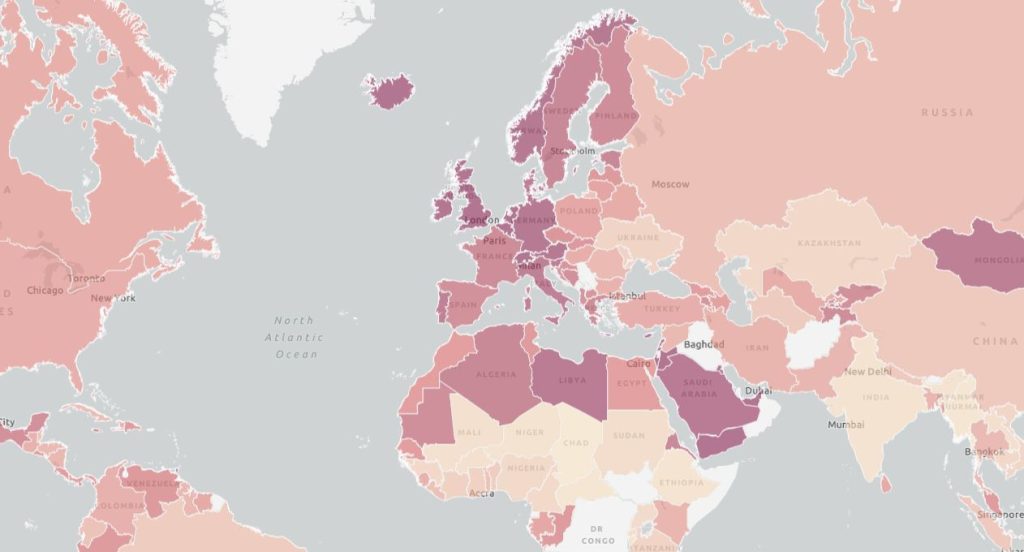Firstly, we need to establish how a country’s overall water use is measured. This is done by calculating the national water footprint. To work out the water footprint, you need to measure how much water a nation uses not just in domestic household consumption but also in industrial and agricultural production. Agriculture and industry use far more water than households do, with global agriculture using around 70% of the world’s freshwater supplies. Current agricultural methods are very water-intensive, with a litre of milk taking around 1,000 litres of water to produce and a kilo of chicken meat taking around 3,000 litres.
The national water footprint is made up of both its internal footprint (domestic use plus amount used for agricultural/industrial production inside the country) and external footprint (amount used to produce imported goods and ingredients). Belgium, like several other urbanized western countries, relies heavily on imported goods so its annual external water footprint is high.
National World Water Footprint

National Water Footprint Statistics, WaterStat, 2005
According to the international not-for-profit organisation the Water Footprint Network (WFN), Belgium has a total annual water footprint of 20 billion cubic metres, which works out as 5,200 litres per day per person (enough to fill around 70 bathtubs). If that sounds like a lot, remember that it includes water used in very water-intensive production methods to supply the population with goods consumed.
Belgium’s water footprint is higher than the EU average of 4,992 litres per day per capita and places it 10th out of all EU countries, ahead of neighbouring Netherlands (4,000) and France (4,900) but behind EU leader Portugal (6,900) and the United States (7,800).
In terms of the breakdown between internal and external footprint, Belgium’s external water footprint is very high. It is a densely populated and highly urban environment characterised by a western lifestyle with high levels of consumption and a high-meat diet. Therefore, many water-intensive products such as meat and cotton clothing are imported in large quantities. 89% of Belgium’s annual water footprint is down to external use, putting it 2nd in the EU behind only the Netherlands (95%) and well above the EU average of 51.6%.
There are big differences between how Belgium uses water internally and externally. Freshwater availability is lower in Belgium than in neighbouring countries, at 1,174 cubic metres per capita each year sourced from five river basins. The largest user is industry. Water used for industry and construction in Belgium is over ten times higher than that used for agriculture, forestry and fishing. Most is consumed by Belgium’s manufacturing industry which uses around five times more water than households, whereas in countries such as Germany and Spain the household use is much higher. This is down to both size of manufacturing industry and Belgium’s relatively efficient domestic use of water.
But external water use is a different story. Here, Belgium’s reliance on agriculturally-produced imports such as meat, coffee, cotton, wheat and milk (mostly from European, Asian and Latin American countries) means that 93.6% of its external water footprint is due to agricultural use, according to a World Wildlife Foundation (WWF) report.
This can have a negative impact on other countries. For example, Belgium sources water-intensive products such as cotton and sugarcane from Pakistan and Uzbekistan, two countries with highly over-exploited water resources. The demand for these products increases the water stress levels in these nations.
We are facing a future where many parts of the world risk experiencing severe water shortages. We need to do what we can to reduce our water footprint both at a domestic and commercial level. In the case of countries such as Belgium, it can be seen that managing the national water supply is only a small part of the challenge. Making a real impact involves working towards less water-intensive agricultural and industrial production methods worldwide, perhaps even making lifestyle changes to reduce the demand for some of these products altogether.